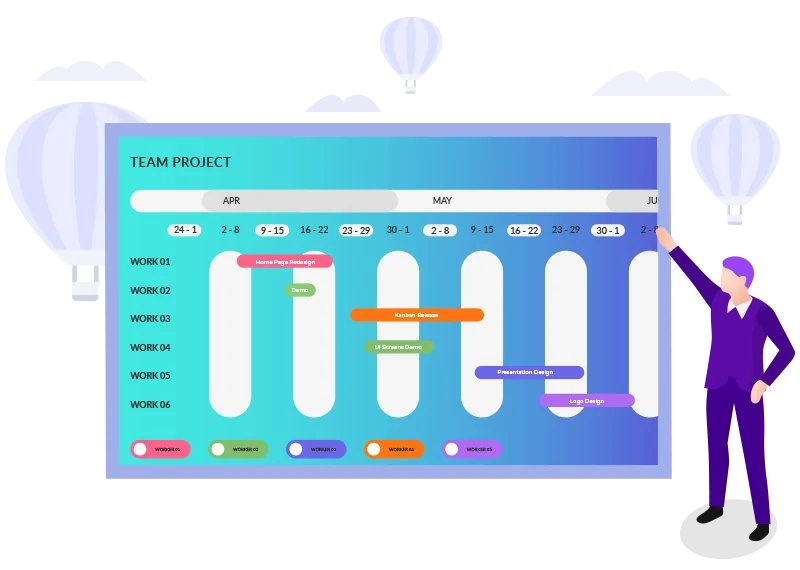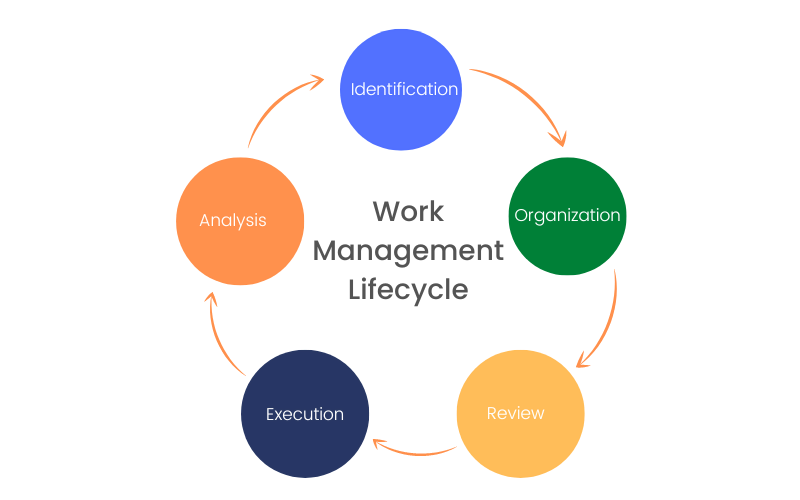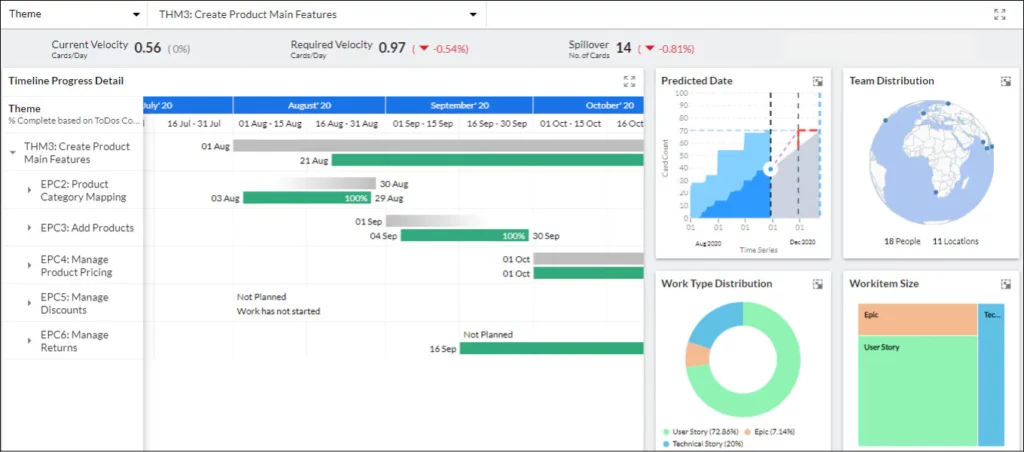What is Work Management? - (Definition, Benefits & Tips)
- 6 mins read
-
By Bhaskar S
- Updated on June 12, 2024
Navigate to
Overview of Work Management
What is Work Management?
According to Gartner, Work Management is a system that organizations use to structure their workflow for every level and team. It is a process that helps a business manage the flow of work and the load of work simultaneously to improve results and performance.
The purpose of work management is to increase clarity within individual teams to ensure that there is minimal internal miscommunication, which can cause unnecessary delays and stress. Effective Work Management also encourages collaboration within all levels of the organization, which further boosts productivity.
With effective Work Management, team members will always be given tasks to complete without making the threat of burnout. This ensures that tasks are completed efficiently and effectively without overwhelming the team with work they can’t complete within the given timeframe.
How is Work Management different from Project Management?
Some organizations tend to use the terms Project Management and Work Management interchangeably despite the two having completely different meanings.
Project Management helps to organize a team’s workflow and tasks to complete the delivery of a single specific project. Its primary purpose is to ensure that the project meets expectations and deadlines. Additionally, Project Management only involves the project team members that are associated with the project.
Meanwhile, Work Management has more to do with an organization’s day-to-day work. Its primary purpose is to help the business grow by ensuring that all of its teams’ workloads across multiple ongoing projects and ad hoc tasks are managed efficiently.
Additionally, project work and general work are too different entities. Project work is any task that is directly linked to a project. This makes this work time-bound with a deadline. Project meetings are an example of this. Meanwhile, general work is an organization’s day-to-day work that continues regardless of whether there is an ongoing project or not. An example of this are weekly meetings and general tasks.
While the two are separate ideas, both are important for managing and improving productivity and delivering key results within an organization.
The Work Management Lifecycle
As a process, the Work Management lifecycle can be done in many ways. Getting Things Done, or GTD, is a popular framework for organizing tasks. Frameworks like GTD help accomplish the primary goal of Work Management: to streamline the flow of work to make it more manageable for an individual or team.
> Work Identification
The final step, after executing the tasks, is to assess the finished work and its quality. This means asking certain questions, such as “Is the finished work up to your standards? If not, what went wrong and how can this be avoided in the future?” Analysis of your finished work allows your team to continue improving.
It’s worth noting doing this steps can be made much simpler through using an all-inclusive Work Management platform, such as Nimble.
The Challenges of Work Management
Without first consulting the execution teams, it can be difficult for managers to set a realistic deadline for their tasks. More experienced managers will have less difficulty due to their knowledge, but there may be other factors that can affect delivery times.
Do You Need a Work Management Tool?
Introducing and implementing Work Management to your team requires the proper tooling. A quality Work Management tool, such as Nimble, can give your team everything they need to work together and complete their tasks on time.
Here’s what a Work Management tool can do:
Modern teams are no longer confined to a single physical space. Team members can be located in different cities and even time zones which can make having frequent meetings much more troublesome. Effective Work Management software, such as SwiftEnterprise, can make it easier for teams to collaborate on tasks despite being from different physical locations.
Work Management can change the way your team works for the better–but only with the proper tooling. Having a visual, collaborative and transparent work management tool can work wonders for your team, in terms of improving morale, productivity and lead-time performance. They help in aligning business objectives to execution and provide a greater sense of purpose to team members.
Get a free trial of Nimble Work Management tool that can help your teams work more effectively.
Share the Knowledge
About Author:
Simplifying Project Management!
Explore Nimble! Take a FREE 30 Day Trial
PM 101
Work Packages 101: Simplifying Complex Projects for Better Management
Learn what work packages are in project management, how they improve project structure, and best practices for effective execution.
Marketing Metrics KPIs: The Ultimate Guide to Measuring Success
Unlock the power of marketing metrics and KPIs with this ultimate guide. Learn how to track, analyze, and optimize your campaigns for measurable success.
What is Digital Marketing? And Why is it Important for a Business?
Learn what digital marketing is and why it’s essential for businesses. Explore key strategies, benefits, and how it helps brands grow in the digital age.
How to Create a Digital Marketing Plan & Execute it with Nimble?
Learn how to create a digital marketing plan and execute it efficiently with Nimble. Discover strategies, tools, and best practices to drive marketing success.
How to Plan and Track Digital Marketing Campaigns?
Learn how to plan and track digital marketing campaigns effectively with key strategies, tools, and tips to ensure successful execution and measurable results.
Top 10 Tips for Social Media Management in 2025
Discover the top 10 tips for mastering social media management, including strategies for engagement, content creation, and staying ahead of evolving trends.
What is a Contingency Plan? 5 Steps to Create One
Learn what a contingency plan is and follow five key steps to create one for your project. Ensure your team is prepared to handle unexpected challenges and minimize risks.
What is a RACI Chart? A Complete Guide for Project Managers
Learn what a RACI chart is, how it clarifies roles and responsibilities in project management, and how to create one for your team to improve collaboration and accountability.







